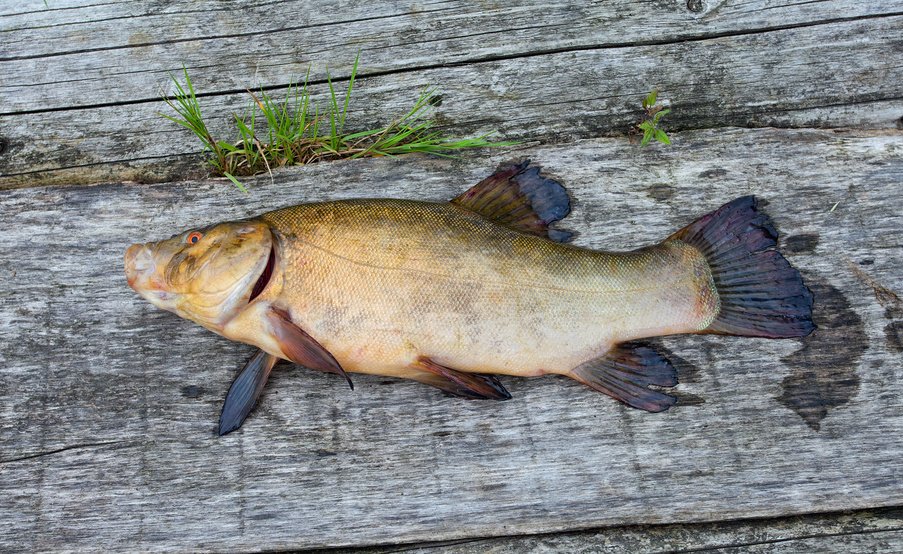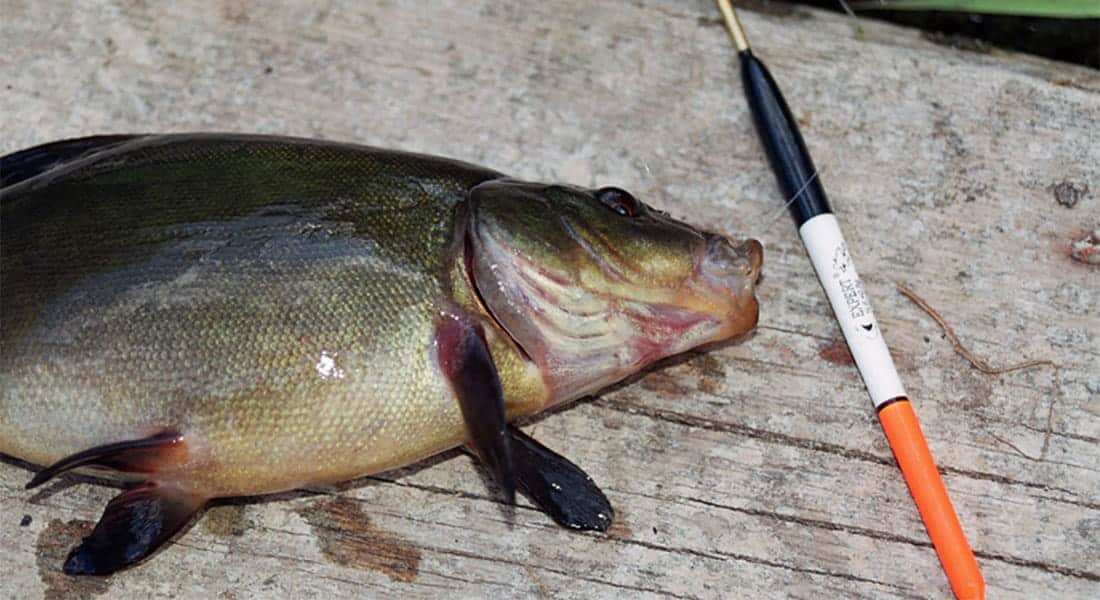Tench is a rather lively and beautiful fish that is caught in many reservoirs of our country. Although there is not so much tench, it is still there, and in order to catch it, you need to have the necessary knowledge about this fish. Tench is not only a tasty, lively fish, but also a coveted trophy, which is a real joy to catch!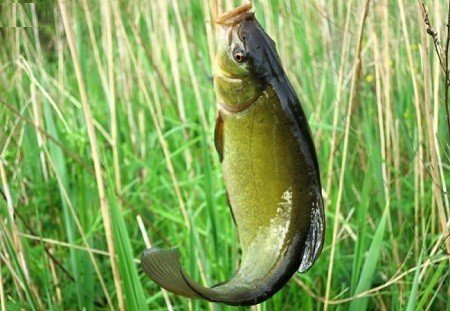
- Behavior of tench in autumn, its habits and parking places
- Biting calendar by months
- September
- October tench
- Fishing in November
- What tackle they use for fishing, bait and attachments for the tench, bait
- Fishing on a float
- Feederists
- Groundbait to use in the fall
- Lures and baits preferred by tench in autumn
- Catching tench with a float tackle
- Catching tench on a donk and a feeder
- Spring catching
- Tips and Secrets
- Поделиться ссылкой:
Behavior of tench in autumn, its habits and parking places
Tench is a very lively fish, like many of its carp relatives. Even a small molt weighing about 500 grams gives the resistance of a kilogram crucian carp or bream. As for the behavior of the tench, everything is not so simple here either. He is used to staying in the lower layers of the water, at the bottom. Fish feed in shallow water areas with high levels of vegetation. What makes it difficult to catch from a technical point of view – how to feed the bait so that both the fish and the tackle are not confused? Consumes both plant and animal food in the diet. Well, now a little more about his habits in the fall.
Unlike summer and
spring night fishing for tench , autumn one is less interesting, because tench becomes more and more sluggish and less often begins to go out to feed at night in shallow water areas.
Most of his time in the fall, the golden handsome man spends, tossing about in the coastal zone in reeds or algal gaps.

Biting calendar by months
The tench behavior changes during the fall – what is good in September and early October will not work in late October – November.
September
At this time, the fish is still active and it is quite easy to catch the desired prey. The tench that has just left the summer continues to feed, but now it pays more and more attention to animal baits. He can often go to the sandbank and it will be much easier to catch him than in the later autumn months. September and the first part of October are the most promising times for autumn tench fishing.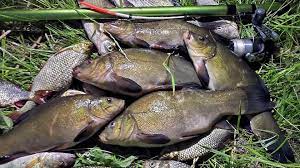
October tench
October is a transitional stage in tench fishing. On the one hand, the fish is still active and the possibility of successful fishing remains, but gradually by the end of October the tench becomes less active, and its storage of fat for the winter is almost over. At this time, it is recommended to use baits and change the baits as often as possible in order to surprise and adapt to the taste of the already full and sleepy tench. You should look for it all in the same place, in the reed and algal gaps. You can also catch it on the donk at this time, but you should not throw the rig too far from the shore.
Fishing in November
November is a time of complete calm. Only a few anglers can boast of a couple of caught tench at this time. At this time, the fish already finishes with zhor and begins to gradually search for wintering places, going to the depths. The sleepy tench is moving further and further from the coast, so you can try to fish with float tackle only in the first half of the month – and it is not a fact that at this time the fish will be near the coast and will take the bait. If the angler still decided to try to catch tench in the last autumn month, then it is recommended to do it on a donk or feeder – so the chances of catching this fish in deeper places increase. Tench bite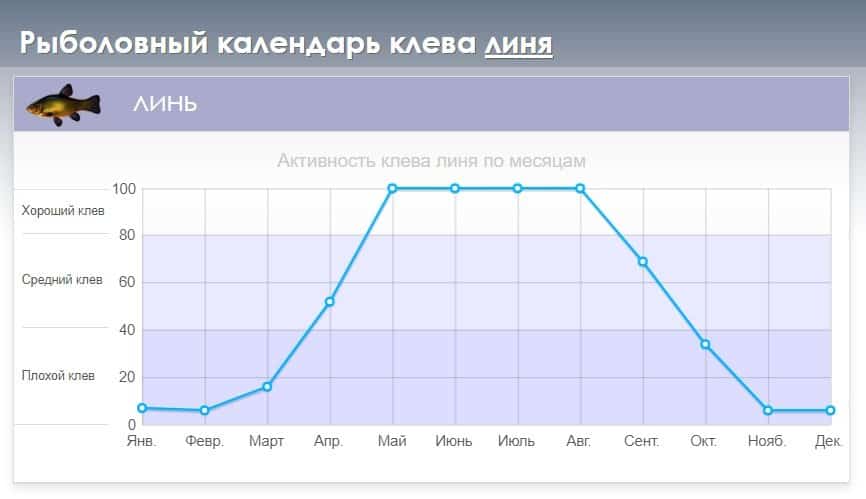
What tackle they use for fishing, bait and attachments for the tench, bait
The classic option for catching tench is, of course, fishing with a
float rod in the coastal areas of the reservoir. Fishing for this fish with bottom and
feeder tackle is also popular
.
Fishing on a float
A float rod is taken 5-7 meters in length. Preferably a telescopic or
flywheel , equipped with an inertial reel (if fishing takes place near the shore and long casts are not particularly necessary) or a
spinning reel . You also need a
fluorocarbon line with a diameter of no more than 0.25 mm, so as not to frighten the fish. A float follows in the rig. Tench fishing involves fishing in calm and stagnant water, so a large float is useless. A weight of 3-5 grams will do. The load is hung according to the weight of the float. You need to choose a hook of medium size: number 5-8 is the best.
Feederists
Feeder tackle: a rod from 1.7 to 3 meters when fishing from the shore and up to 2.5 meters when fishing from a boat. Spinning reel, as well as a line with a diameter of 0.18-0, 25 mm on it. Further, it is advisable to choose the second between a simple load and a feeder in order to increase your chances of catching fish. The hook will fit the same size as the float.
Groundbait to use in the fall
The most popular groundbait for tench in the fall is a mixture of chopped animal baits (
worms ,
bloodworms ,
maggots or, less often, small snails) with the soil of a reservoir.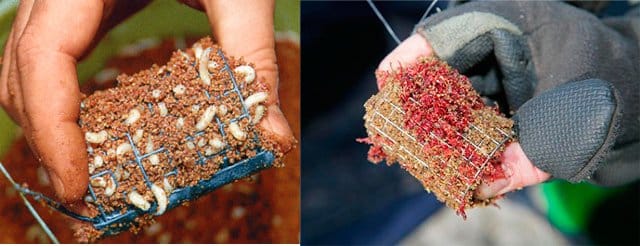
Lures and baits preferred by tench in autumn
As mentioned earlier, there are two types of bait: animal and vegetable. Let’s take a look at most of the baits used in either category:
- Vegetable baits : small boiled corn kernels , talker , fragrant dough , pearl barley , peas , and rarely small boilies .

- Animal bait : red , earthen worms , maggots, bloodworms, grasshoppers (rarely due to its shortage in the cold season), caddis flies , snails.

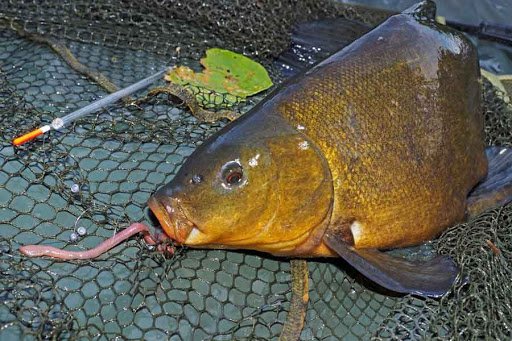
Catching tench with a float tackle
In the first half of autumn, fishing for tench with a float tackle is the most catchy option for catching this fish. The tench still actively approaches the coast and feeds on the shallows, being in the zone of increased aquatic vegetation. Usually these are reed gaps and places of accumulation of algae, the depth of which rarely reaches 2 meters.
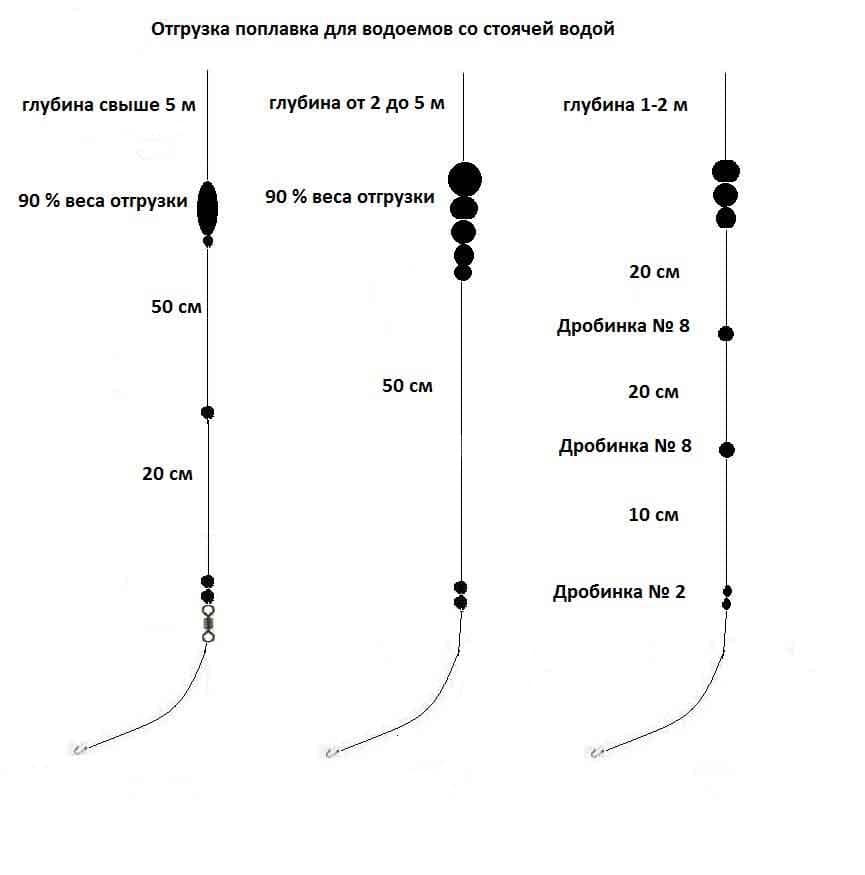
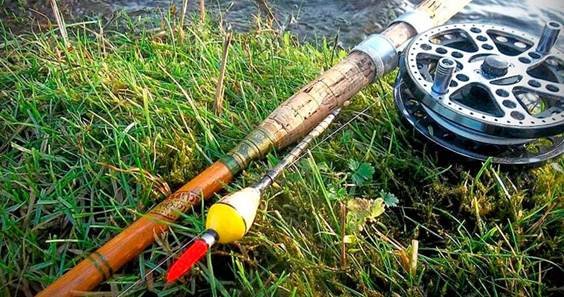
Catching tench on a donk and a feeder
Catching tench on a donk and a feeder is actual in autumn. At least it is even more popular in the second half of autumn, when everything is dull on float rods. It is recommended to hang feeders on both the donk and the feeder, and not simple loads. So, after feeding and waiting for the tench, there will be more chances to catch it. It is best to combine attachments, making the so-called sandwich. Such bait should be of interest to fish looking for food while eating.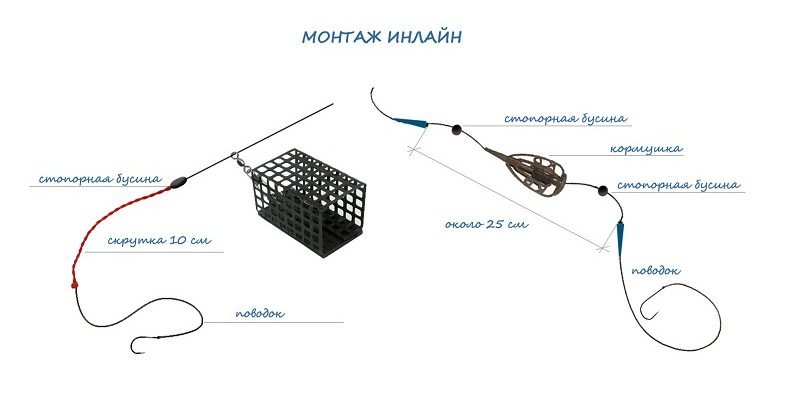
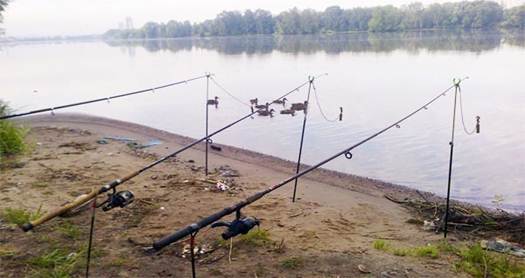
Spring catching
Spring fishing is an advanced fishing technique. It is just the same spring that complements any feeder or donk. The essence of the fishing method is to fill the spring-feeder with top dressing as much as possible and fix the hooks with bait in the food. When the fish will eat / suck out the food, it can certainly swallow with it the hook itself, which was previously in the feeding. Also, this method is excellent in that you do not need to spend money on it. A feeder, spring or nipple can always be made at home so as not to spend money on it.
Tips and Secrets
Some tips that will definitely come in handy for novice anglers, as well as some of them may be of interest to anglers with some experience. After all, catching a tench is not such an easy type of fishing:
- Don’t give a descent line . This fish, like many lively carp fish species, begins to sink to the bottom when caught. This can lead to a snag, therefore, when playing small and medium specimens, you need to sharply bring the fighter to the surface. But if a big line is caught, you need to tinker with it a little, let it weaken. You also need to follow the direction of his movement in order to avoid hooks and knots in addition to the breakdown of the bait.
- You should always have a landing net with you . Although most of the breaking lines are not large, they are very sharp and it will be much easier to pull them out with a landing net.
- Choose promising fishing spots . In most cases, these are places with reed thickets and gaps, or small pools with mud. But in such places you need to be careful not to catch on plants.
- You need to be as quiet as possible . The tench is a very sensitive fish, so he hears even the smallest sounds from the shore and can easily go to the depth for a long time, frightened by the angler or his noisy casting of the bait into the water.
- You can determine the location of fish by water bubbles emerging on the surface of the reservoir . This is a sure sign that the fish is burrowing into the silt, feeding and looking for food in it.


